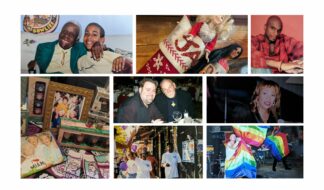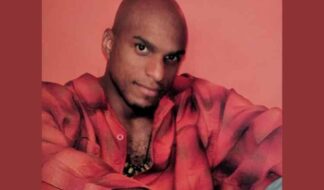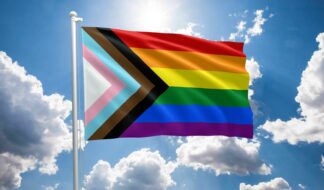by Gwendolyn Ann Smith
Viewpoint
Definitions are slippery things. Language is constantly evolving and words change. New terms are created, old ones become footnotes, and others dramatically change meanings. Consider the word gay and how it's meaning may have morphed from the 1890s to today.
It can be even more difficult when one is attempting to define a group of people. It seems to be in our nature to defy classifications. We rankle at anything that would deny our individuality and evade even the most rudimentary attempts to define. Indeed, the only viable definition are ones we choose for ourselves, which leads to scores of tailor-made terms that serve little use when attempting to cover more than a handful of willing users.
Within the transgender community – a term itself that remains contested in many circles – we have gone through decades of possible terms to describe one who transcends the gender they may have been assigned at birth.
At the turn of the last century, Dr. Magnus Hirschfeld seemed content to use the term "transvestite" to cover any number of people. His seminal work, "Die Transvestiten," covers those who cross-dress, performers known for cross-gender portrayals, those who underwent the rudimentary surgeries of the day, and gender variance in non-western cultures.
Today the term is defined in a limited fashion, as a synonym to cross-dresser, and typically refers to those who wear clothing of the opposite gender. You'll note that even in that last sentence I am walking on eggshells, knowing that there are likely many who would argue against such a definition.
Since Hirschfield's time, we've seen many other turns picked up and discarded. Earl Lind in the 1910s used androgyne and fairy. Later, the term transsexual hit the scene. Drag was used by some in an all-encompassing fashion in the late 1960s and early 1970s. There was the mercifully short-lived femmophile, and other baggage-laden terms such as aytogynephile.
The one that somehow "stuck" is transgender. Yet, pinning down a definition is slippery. One of the more inclusive is that used by the City and County of San Francisco, and coined in 1994. It reads, "'Transgender' is used as an umbrella term that includes female and male cross dressers, transvestites, drag queens or kings, female and male impersonators, intersexed individuals, pre-operative, post-operative and non-operative transsexuals, masculine females, feminine males, all persons whose perceived gender or anatomic sex may be incongruent with their gender expression, and all persons exhibiting gender characteristics and identities which are perceived to be androgynous."
It is a mouthful, and full of potential problems. For one, I do not know of many intersexed individuals who would feel comfortable within this definition today, though that may have been different in 1994. Many others in there would either not feel they are explicitly included in such, would not be comfortable to be listed within, or even would argue that some others listed do not belong.
I already mentioned my own personal definition of the term: anyone who transcends the gender they were assigned at birth. It covers a lot of ground, and is pretty open ended. I don't, for example, indicate how long one must transcend that gender, or if they have to have surgery, or anyone beyond this simple definition.
Before I go any further, let me also note that anyone is perfectly welcome to opt out of any term, choose their own term, or really do whatever they wish. In providing my own definition to the above, I want to make it clear that it is mine, and is how I see the world I live in. I'm certainly not saying that you have to fit such a definition any more than I'd feel obligated to accept a definition of me that I'm not comfortable with. Really, like I said above, language is slippery.
Even without looking at my definition or the rather verbose San Francisco definition, many do not feel included in the term "transgender." some have opted for their own spaces, or opt for genderqueer or third gender, or even have dropped the "gender" from the word altogether, being simply "trans."
Let me add one more wrinkle to this all, because while we are free to define ourselves however we wish, when we face violence, discrimination, or other ills, that in itself needs to be defined – and that is different from a personal definition. Consider the 2001 murder of Willie Houston.
Houston was, as far as we know, a straight, non-transgender identified, African-American man living in Tennessee. After taking a river cruise, his wife needed to use the restroom. Houston held her purse while she went in. Houston was also escorting a blind friend to the men's room. On the way there, Willie Houston was taunted with homophobic slurs, and shot.
Willie Houston was neither gay nor transgendered identified, yet his killer saw him as both: gay because he had another man on his arm, and trans because he was carrying a purse.
When we fight for rights, those rights are provided under the umbrella of "transgender," much like the 1994 San Francisco language — or they might refer to gender identity and expression. It is largely transgender-identified people and their allies who may be fighting for those rights. Yet such rights affect a wide swath of people regardless of their own self-identity — and that is good.
We may never pin one down we can all agree on — and in an evolving world, that makes plenty of sense. Yet while language is slippery — and definitions even more so — we still need them from time to time. It's funny that way.
—









